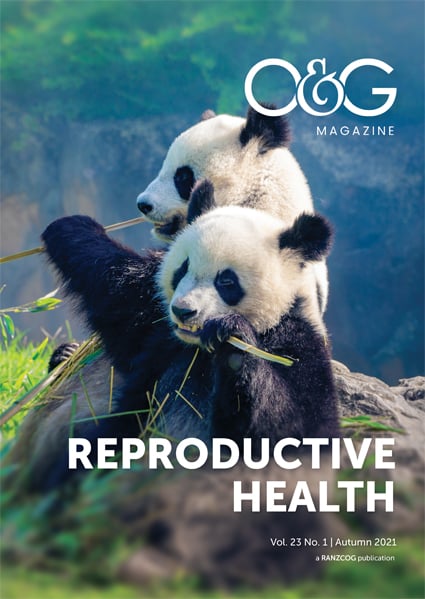Although I set out to provide clear answers to this question, I found myself down a big fat wombat hole of meeting structures, change management psychology, M&M meetings, quality and safety meetings, audits, root cause analyses, and other confusing terms. It wasn’t long before I began to wish I had done a postgraduate qualification with the Australasian College of Medical Administrators.
Is an M&M just obstetric storytelling?
There are many great reasons to tell each other stories, since ‘Stories help us smooth out some of the decisions we have made and create something that is meaningful and sensible out of the chaos of our lives.’1 Telling stories allows us to gather a group of people who can support us; however, an effective M&M meeting is far more than an opportunity to experience collegiate support – it can also encourage uptake of an important guideline and help teach junior staff best practice.
An M&M is a peer review process of cases. This is quite a different process to a safety and quality meeting, which is taken from the perspective of the administration and addresses problems from a systems point of view. Both these types of meetings operate together to address patient factors, human factors, systems factors, as well as acknowledge the information that is not known. They are both meetings designed to make care safer, and psychology research seems to suggest that helping clinicians to change and make care safer is no longer about managing with either a carrot or stick, but about forming stronger relationships and engagement with each other.2
Establishing a meeting structure
It will come as no surprise to learn that having a structure for your meetings can be helpful to staff who can then feel more prepared and able to follow a process. Here are a few tips that might help you to think about the aims of your meetings and the structure you may use to help you achieve them:
- Determine your criteria for data collection: near misses, morbidity, mortality. Then establish a system to collect the data. Riskman and other software is not always the best option: frequently people are exhorted to use it more, and then don’t; even more frustratingly, one group might use it more than another and thus bias the data. If there is one thing you can be certain about, making the process more difficult by insisting on cumbersome software is a sure way of making sure no one uses it. A Choice Architecture method suggests a simpler approach – a dedicated email sent to the clinician tasked with the responsibility to investigate and populate databases for record and analysis.
- The case presentation should meet predetermined criteria (does anyone really care about the Rubella status any longer?) and can be about a contemporary case (some bad thing which just happened) or an audit of indicators. These indicators may be determined by your area, or could be adapted from those published by professional bodies such as a colleges (eg. RANZCOG) or state groups (eg. Perinatal services performance indicators or Victorian audit of surgical mortality).3 Also, keep in mind that not every meeting needs to focus on everything that has gone wrong – perhaps the Christmas period M&M could refocus on all the things your group did well this year.
- After presenting the case, review the literature to determine if there is a standard to follow –the evidence ranges from Standards with a capital S (eg. the Heavy Menstrual Bleeding Clinical Care Standard from Australia: www.safetyandquality.gov.au/standards/clinical-care-standards/heavy-menstrual-bleeding-clinical-care-standard) or national guidelines, college guidance and statements to more recently developing evidence, such as that presented in systematic reviews, trials, series, case reports, and then see if this tallies with hospital guidance etc.
- At the conclusion of the discussion, document the factors – patient, human, systems, etc, and discuss to what degree the outcome was preventable (eg. RCS: www.rcseng.ac.uk/standards-and-research/standards-and-guidance/good-practice-guides/morbidity-and-mortality-meetings/). Decide who is responsible for fixing the problem and determine the timeline.
There are a range of other factors you might like to consider. One of the most fundamental of these is who should present? An M&M can be an excellent opportunity for junior staff learning; however, there are strong arguments for having the most senior staff present, as they often do not receive feedback in any other forum. Either way, you should also consider whether it is best for staff to present their own cases or have a colleague present for them. Having a case presented by an uninvolved staff member could help everyone to see the case from a different angle.
As well as thinking about the individual presenters, you should also think carefully about who mediates the meeting. It seems obvious that it should be someone who has the respect of others and speaks respectfully to them – a mediator who is blame focused/prioritising individual responsibility/of the ‘try harder’ school rather than systems focused, is unlikely to achieve change.
Another point to consider is how many people you want to attend these meetings. Obviously, you should include O&Gs, junior staff, midwives and midwifery students, medical students, paediatric doctors and nurses. However, this won’t necessarily provide the full picture, which is why you might need to think about including imaging staff or pathologists. You might also want to consider having meetings that include Admin staff who manage the logistics and people from IT who manage the data. Rather than trying to include everyone in every meeting (and feeling like you’re running a circus), you could think about having M&M meetings that focus on particular groups and their perspectives. Also consider frequency: more often to nip things in the bud, less often for higher participation.
Of course, meetings are rarely anyone’s favourite part of the workload, so you might want to provide incentives to attend. This could include having people paid for their time, or having the meeting time recorded to count towards a certificate for their CPD points. At the risk of pointing out the obvious: people are far more likely to participate well if they feel their efforts are being noticed and rewarded.
Acknowledgements
Thanks to Bridget Pinnuck, Steve Bolsin and Lauren de Luca.
- Further reading
Royal Australasian College of Surgeons. Guideline reference document for conducting effective Morbidity and Mortality meetings for Improved Patient Care. Available from: https://umbraco.surgeons.org/media/2708/2017-04-12_gdl_conducting_effective_morbidity_and_mortality_meetings_for_improved_patient_care.pdf - Royal College of Surgeons of England. Morbidity and mortality meetings tools and templates. www.rcseng.ac.uk/standards-and-research/gsp/morbidity-and-mortality-meetings-tools-and-templates/
References
- Dan McAdams, narrative psychologist, Northwestern University, US.
- Self-determination theory. Richard M Ryan and Edward L Deci, 2017.
- A Standard is the top line of evidence, a clinical practice guideline is informed by a standardised systematic review, a statement is something else (most hospital ‘guidelines’) and a committee opinion is the (educated) vibe.






Leave a Reply